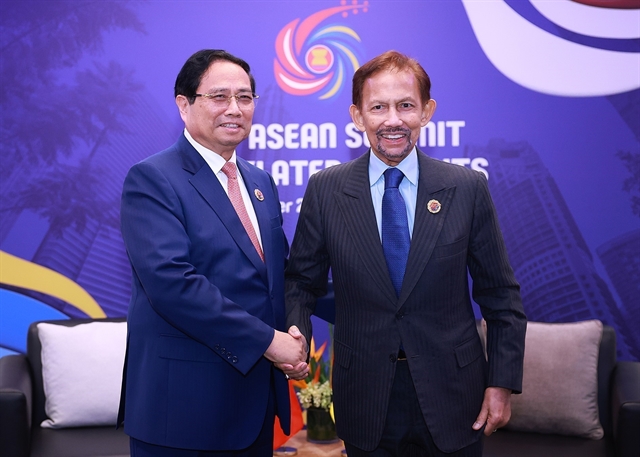 Opinion
Opinion

 |
| Vũ Quốc Trí, General Secretary of the Việt Nam Tourism Association. VNA/VNS Photo |
Plastic pollution remains a major hurdle in Việt Nam’s journey toward sustainable tourism. While efforts to reduce plastic waste have delivered promising results, significant challenges remain. General Secretary of the Việt Nam Tourism Association Vũ Quốc Trí shared his insights with Vietnam News Agency on how Việt Nam can overcome these obstacles and elevate its tourism brand.
Việt Nam has launched several projects to reduce plastic waste at tourist sites. What results have been achieved so far, and what steps should we follow to position Việt Nam as a green destination on the global tourism map?
Over the past two years, with support from UNDP, Việt Nam has piloted a small-scale but meaningful project focused on cutting plastic waste in tourism. The core goal is to move toward greener, more sustainable tourism – a global priority, not just Việt Nam’s. I can say the project has delivered very positive results.
For instance, we’ve developed a comprehensive research document in collaboration with the former Institute of Environmental Strategy under the Ministry of Natural Resources and Environment (now the Ministry of Agriculture and Environment). This serves as an important theoretical foundation.
Second, we have created a set of specific criteria for plastic-free tourism businesses, providing clear guidance and mechanisms for enterprises to follow.
Third, we have piloted an app to help tourism businesses manage plastic waste more effectively. In short, our biggest achievement has been building technical solutions and applying new technologies, including automation, to manage plastic waste.
We’ve also issued an action plan for reducing plastic waste in tourism. This plan, developed by the Việt Nam Tourism Association with UNDP’s assistance, will guide our sector in meeting the Government’s sustainable tourism targets. By 2030, we aim to achieve tangible, measurable results.
The project has demonstrated clear impacts in two key locations.
At Tràng An in Ninh Bình province, several sites – including Tam Cốc Bích Động and the Vân Long Wetlands – have genuinely transformed into green destinations, free from plastic waste.
Meanwhile, in Hội An, thanks to the project, accommodation providers and service businesses in the Old Town have cut their plastic waste by 30–35 per cent in just six months.
We view these as very positive outcomes and hope to scale up these models nationwide.
High costs are seen as a major barrier to building green businesses and destinations, preventing many enterprises from joining the circular economy. In your view, how can we address this issue? What kind of government support is needed to help tourism businesses become truly green?
Through our project discussions and workshops with tourism businesses in pilot locations, it’s clear that a major barrier is the lack of resources for green transformation and plastic-free operations.
As we all know, tourism relies heavily on plastic-based materials and products. Replacing all of these requires substantial financial investment. It’s something especially challenging for tourism businesses right now. Most tourism enterprises in Việt Nam are small, even micro businesses with just a few employees. In today’s competitive market, making large new investments is simply out of reach for many of them.
The second challenge is technical knowledge. Businesses want to change, but they’re unsure what alternatives to adopt, how to make the switch or where to source reliable suppliers. These are common concerns that have come up repeatedly in our discussions.
Third is the issue of policy and local management. How can we ensure fair policies at destinations that encourage and reward those making real efforts to go green? This, too, needs to be addressed.
For the Việt Nam Tourism Association, we don’t have the authority to issue regulations or enforce compliance. Our role is to inspire, encourage and promote voluntary action within the industry.
That’s why we’re calling for stronger involvement and support from government agencies. If tourism is to be a key economic sector, then we need preferential policies such as low-interest loans, tax breaks and support for management training to help businesses make the transition.
Based on your criteria, are there destinations in Việt Nam that can already be considered green?
We’ve identified several standout examples, such as Cô Tô Island, Cù Lao Chàm and Tràng An. In addition, we’ve seen promising practices in places like Sa Pa, Hà Giang, Bắc Giang and other provinces. However, to fully formalise these as green destinations, we’re just beginning a national green destination programme.
We hope that with strong engagement from local authorities and businesses, a true map of green tourism destinations will emerge, becoming a powerful asset for Việt Nam’s tourism sector.
How will green destinations help elevate Việt Nam’s tourism brand?
This is a fascinating topic. Việt Nam’s tourism has earned numerous international awards, but we should not become complacent. We believe it’s essential to benchmark ourselves against higher-performing countries rather than those lagging behind.
If we want to improve Việt Nam’s competitiveness within Southeast Asia, we still fall short in international visitor numbers, economic contributions, and cultural value preservation compared to some neighbours. Our ambition is to position Việt Nam among the top 30 tourism nations globally by 2030.
Of course, we’ve made excellent progress, but to reach this goal, much more work is needed. Overcrowding at tourist sites during peak seasons, for example, could damage our reputation globally. That’s why the Việt Nam Tourism Association is committed to partnering with businesses to implement technical solutions and bring greater professionalism to tourism operations across the country. — VNS